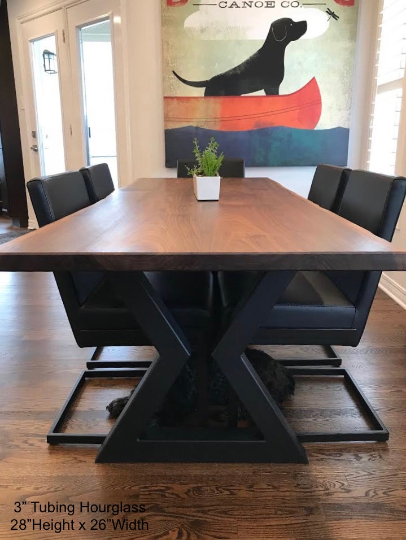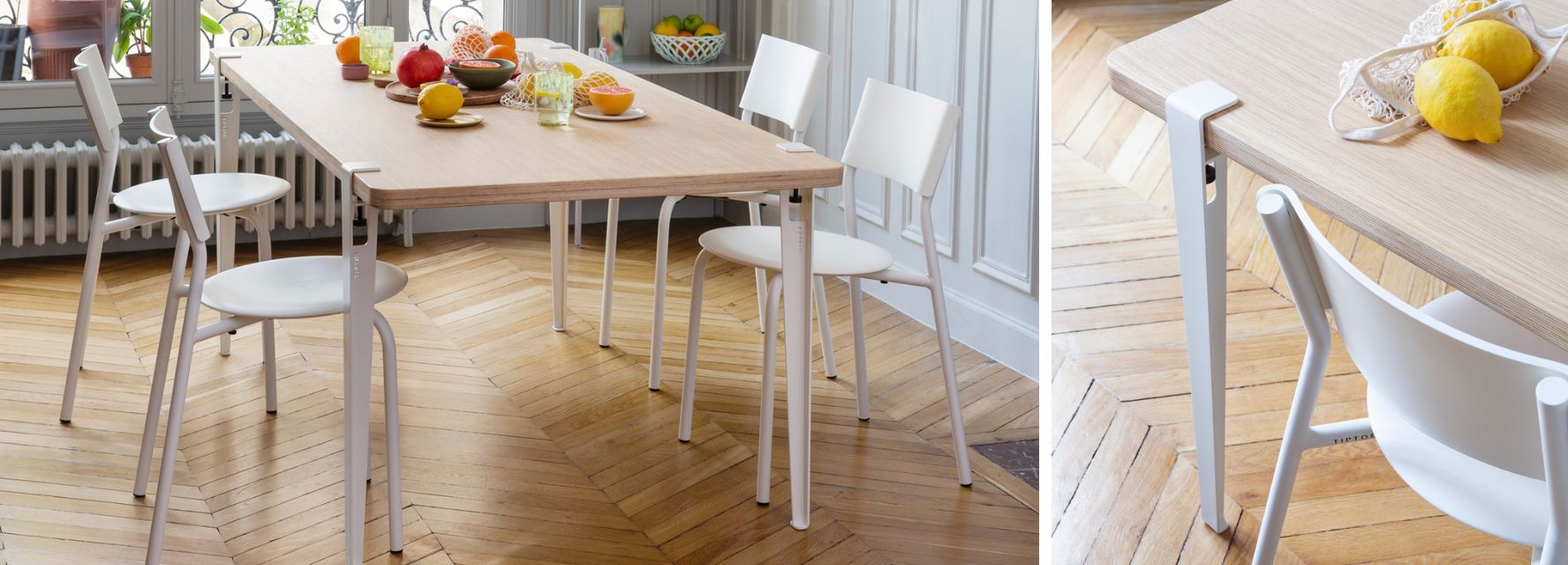The Best Materials for Durable and Elegant Dining Room Table Legs
Exactly How to Select the Perfect Dining-room Table Legs for Your Home Design
Choosing the ideal eating room table legs is a nuanced process that calls for cautious consideration of different aspects, including your space restrictions, aesthetic preferences, and functional requirements. The interplay between styles, measurements, and products can significantly influence the atmosphere of your dining location, making it essential to approach this choice systematically.
Assess Your Dining Room
Assessing your dining area is important for choosing the right table legs that match both aesthetic appeals and functionality. Begin by gauging the dimensions of your dining location, consisting of ceiling height, flooring space, and closeness to other furniture. This information will assist determine the ideal dimension and elevation of your dining table, which directly influences the option of table legs.
Next, consider the style and design of your dining space. For example, an open-concept design might profit from table legs that provide visual agility, such as slender metal or acrylic alternatives. Alternatively, a much more conventional setting might require strong wood legs that offer a sense of permanence.
Evaluate the existing color combination and products in your dining location. Harmonizing the table legs with these aspects creates a cohesive look that improves the general decor. Furthermore, think about the functionality called for in your room. As an example, if you regularly host huge events, consider legs that give additional assistance and stability.
Eventually, a detailed assessment of your dining room will certainly lead you in making a notified choice, making sure that your table legs not only boost the visual allure yet additionally serve functional purposes.
Consider Your Design Preferences
When choosing dining room table legs, it is necessary to mirror on your personal style preferences, as they dramatically influence the total visual of your eating space. Your option of table legs can either complement or contrast with existing decoration, making it important to align them with your preferred interior decoration style.
If your home leans in the direction of a modern visual, consider sleek steel or minimal wood legs that offer a tidy, minimalist look. For a much more conventional method, luxuriant wooden legs with intricate makings can include a touch of elegance and class. Industrial designs gain from robust, basic materials such as redeemed timber and steel mixes, showing a tough beauty.
Furthermore, farmhouse and rustic styles frequently prefer sturdy, beefy legs that evoke a feeling of heat and convenience. On the other hand, if your design is diverse, you may choose unconventional forms or a mix of products to create aesthetic rate of interest.

Evaluate Material Options
The choice of product for dining space table legs plays a crucial function in both resilience and visual allure. Common products include wood, metal, and composite alternatives, each offering unique characteristics that can influence the overall look and longevity of your table.
Timber is a timeless selection, known for its warmth and flexibility. Woods like oak and walnut give outstanding strength and can be completed in different discolorations to match any decoration. Nevertheless, softwoods like ache are more prone to damages and scrapes, making them less suitable for high-traffic areas.
Steel legs, commonly crafted from steel or aluminum, exude modernity and industrial appeal. They are immune and highly long lasting to put on, making them ideal for households with youngsters or constant gatherings (dining room table legs). Furthermore, metal can be finished in various colors, enhancing the modification opportunities
Composite products, such as MDF or laminate, deal price and diverse designs. While commonly much less long lasting than solid wood or steel, they can still provide an elegant appearance and are commonly simple to preserve.
Ultimately, the product you pick should line up with your way of living, aesthetic choices, and the degree of usage your dining table will certainly experience.
Determine Elevation and Dimension
Choosing the ideal height and size for your dining space table is essential for both performance and comfort. The basic height for dining tables generally ranges from 28 to 30 inches, permitting ample legroom for many people when seated. However, it is crucial to take into consideration Discover More the measurements of your eating space and the sorts of chairs you prepare to use.

In addition, think about the percentages of your dining area. A larger table in a spacious area can produce a grand atmosphere, while a smaller sized table functions well in even more intimate settings. Eventually, the ideal height and dimension will certainly balance with your overall style and boost the eating experience for you and your visitors.
Explore Customization Opportunities

In addition, the layout of the legs can be personalized to fit numerous designs, such as rustic, modern, or industrial. Conical legs can stimulate a mid-century contemporary feeling, while chunky, block-style legs may resonate with standard or farmhouse decor.
Property owners can likewise explore shade finishes, from natural timber stains to paint, enabling them to match or contrast with the tabletop and surrounding style.
Furthermore, leg height can be adjusted to fit read here details seating plans or individual preferences, improving both comfort and capability.
Last but not least, one-of-a-kind decorations, such as carvings or decorative braces, can additionally customize the table legs, making the dining experience not just a declaration but a meal item in the home. By thinking about these modification options, property owners can develop a dining-room table that absolutely reflects their uniqueness.
Conclusion
Choosing the ideal eating area table legs calls for careful consideration of different aspects, consisting of the dimensions of the dining space, design choices, material resilience, and wanted elevation. Personalization options additionally enhance the YOURURL.com capability to achieve a natural visual that complements the overall design. By methodically examining these aspects, home owners can guarantee that the selected table legs not only meet functional requirements however also contribute positively to the dining experience and setting of the home.
Selecting the optimal dining area table legs is a nuanced process that calls for cautious consideration of different elements, including your space constraints, aesthetic choices, and functional demands.Assessing your dining room is crucial for choosing the right table legs that enhance both aesthetic appeals and capability.When determining size, determine the location where the table will certainly be put to ensure it fits pleasantly, enabling for at the very least 36 inches of clearance around the table for very easy motion. A larger table in a large location can produce a grand ambiance, while a smaller table functions well in more intimate settings.Selecting the optimal eating area table legs needs mindful factor to consider of different variables, consisting of the measurements of the dining space, design preferences, product toughness, and desired height.